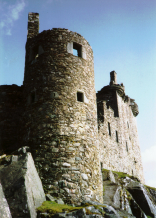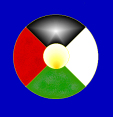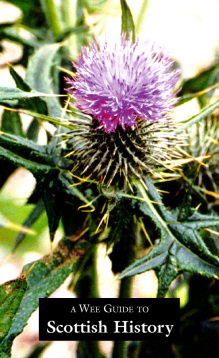The Jacobite Risings
1689-90 Revolution
William and Mary were confirmed as joint rulers in Scotland in 1689.
John Graham of Claverhouse, Bonnie Dundee, raised a Jacobite army in support of James, and defeated a government army at the Battle of Killiecrankie. Graham, however, was mortally wounded during the fighting, and the Jacobites were frustrated besieging Dunkeld, and eventually mostly dispersed.
James landed in Ireland, but his army was defeated at the Battle of the Boyne in 1690, and he fled back to France.
1692 The Massacre of Glencoe
William offered to pardon Jacobite chiefs if they swore allegiance to him by 31 December 1691. Most chiefs took the oath by the deadline, but the chief of the MacDonalds of Glencoe was a few days late in signing, having been delayed by the weather. Deciding to make an example of the clan, William ordered fire and sword against the MacDonalds of Glencoe. The massacre took place on 13 February 1692, carried out by troops, commanded by the Campbells of Glenlyon, who were billeted on the MacDonalds and received their hospitality. About 40 of the clan were killed, many dying in the snow as they fled.
1695 Founding of the Bank of Scotland & the Darien Scheme
The Bank of Scotland was founded in this year, as was the Company of Scotland Trading to Africa and the Indies. The Scots tried to set up a colony on the isthmus of Panama in 1698. The scheme was a disaster because of disease, attacks by the Spanish, and hostility and lack of support from the English.
1694-1707 Deaths of Mary and William
Mary died in 1694 and William in 1702, after his horse stumbled on a molehill, the Jacobites thereafter toasting the little gentleman in the velvet jacket. As they had no children, Anne, second daughter of James VII by Anne Hyde, came to the throne. Anne was married to Prince George of Denmark, and although they had 18 children, all of them and her husband predeceased her.
1707 Union of Parliaments of Scotland & England
Despite fierce opposition in Scotland and rioting in Edinburgh, the parliaments of England and Scotland were united under the direction of Anne. This union was achieved more by bribery and coercion than by any wish of the Scots to join with the English – although some saw considerable economic advantages in sharing the wealth of England’s growing empire. The last Scottish parliament did vote to keep its own church, courts and legal system. The separate kingdom of Scots ceased to exist, and was incorporated into the United Kingdom of Great Britain.
1714 Death of Queen Anne & Accession of George I
Anne died, and there being no other close Protestant heirs, George, Elector of Hanover, was asked to be king. Anne was the last Stewart monarch, although since the Union of the Crowns in 1603, the Stewarts had seldom visited Scotland, except in times of need or war. Few of them ruled well, many were motivated by greed and lust, and latterly they had shown little concern for their Scottish subjects.
George I, first of the Hanoverian monarchs, was crowned king, although he could not speak English, and had even less interest in the northern part of his kingdom. There was much discontent in Scotland, and to a lesser extent in England.
1715 Jacobite Rising
The Erskine Earl of Mar raised the standard for James VIII, son of James VII and Mary of Modena, at Braemar; but the Jacobite army was poorly led. The Jacobites were brought to battle at Sheriffmuir, after which, although indecisive, the Jacobites withdrew and disbanded. Another small army was also defeated at Preston in England.
James VIII landed at Peterhead after the battle, and although he stayed in Scotland until 1716, it was too late to make any difference, and he retreated back to France. Some of his supporters were forfeited, and lost their titles and lands.
1719 Jacobite Rising
A small army of Spaniards, numbering about 300, landed at Eilean Donan Castle, but they were soon defeated by Hanoverian forces at the Battle of Glenshiel.
1724 Building of roads
General Wade began a programme of building military roads and barracks throughout the Highlands of Scotland to enable the Hanoverian government deal effectively with any rising by the clans.
1727 Death of George I
George I died in 1727 at Hanover, and was succeeded by his son, George II. This year also saw the founding of the Royal Bank of Scotland, and reputedly the burning, at Dornoch, of the last person found guilty of witchcraft.
1728 Birth of Robert Adam
Robert Adam was born in 1728 at Kirkcaldy into a famous family of architects, which included his father, William, and his brothers. William was responsible for much of the work at Fort George, as well as the castles of Corgarff and Braemar, and later the fine Duff House and House of Dun. Robert, and his brothers James and John, founded an architectural style based on classical designs. Robert was responsible for designing Culzean Castle and the Georgian House, Edinburgh, and there are many examples of their work throughout Scotland.
1734 Death of Rob Roy MacGregor
Rob Roy MacGregor died, and was buried at Balquhidder. He was a farmer and cattle dealer, but took part in thievery and blackmail, and was involved in the Jacobite Risings of 1689, 1715 and 1719. He became a legend in his own lifetime, although he died peacefully at the ripe old age of 74.
1736 Birth of James Watt
James Watt, the pioneer of steam engines, was born in 1736 at Greenock.
1744 Golf
Although a form of golf had been played in Scotland from the 15th century, it was in 1744 that the first golf club, the Honourable Company of Edinburgh Golfers, was founded.
1745–46 Jacobite Rising
Bonnie Prince Charlie, the Young Pretender, son of James VIII and Princess Maria Clementina Sobieska, landed in Scotland and raised an army at Glenfinnan, most of it from the Highlands. His army advanced south and defeated a Hanoverian force at the Battle of Prestonpans. The Jacobites then marched into England, and got as far south as Derby, but eventually had to retreat, although in good order.
The Prince was disappointed by lack of support in England and the Scottish lowlands, and argued with his generals.
After winning the Battle of Falkirk in 1746, the Jacobites were brought to battle at Culloden Moor by the Duke of Cumberland. The Jacobites were defeated and slaughtered, and atrocities committed after the battle well earned Cumberland the title Butcher.
After many adventures, including a dramatic escape with help from Flora MacDonald, Charles eventually fled to France, but many of his supporters were executed and their property forfeited. The wearing of tartan and Highland dress was proscribed, and the carrying of arms forbidden. Forts were also built, such as Fort George, to accommodate garrisons for quelling any further risings.
Charlie returned to the continent a folk hero, but little in the rest of his life inspired any admiration. He began to drink and in 1760 his wife deserted him. He was forced to move to Rome, and there died at the age of 67, in 1788.
© Martin Coventry 2018









